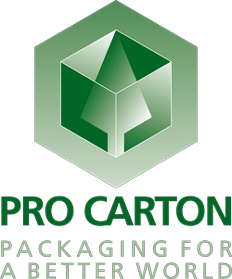Chances are that you have read an article about Artificial Intelligence (AI) since the last Pro Carton Christmas newsletter. You may have even started investing in the technology. And it goes without saying that this is no longer a buzzword – it is an essential component of a business’ growth strategy.
According to a report from Future Market Insights, AI in the packaging market is projected to rise from US$2,080.8 million to US$6,015.6 million over the next ten years. Most of the talk has been around how AI algorithms could be deployed to predict potential issues – enabling businesses to minimise production downtime by improving the maintenance of machinery.
Over in the UK, the British Plastics Federation is set to host an event examining the relationship between its industry and AI. The association’s presentation claims that it “provides many opportunities for manufacturers, waste management companies and recyclers to optimise their processes, increasing efficiency and profitability while providing invaluable data and reducing waste”.
None of this is new. Most of the businesses that we speak to, inside and outside the packaging industry, have had internal discussions about the adoption of AI and are identifying ways to deploy the technology. But those discussions go beyond the production side. What if you could leverage tools like generative AI to support your creative efforts?
Generative AI is an advanced technology that autonomously delivers answers based on predefined parameters and learned patterns. I’m sure you’ve all heard of ChatGPT or perhaps Google Bard and Microsoft’s CoPilot? These systems have been ‘trained’ on huge amounts of data to perform tasks, enabling them to understand and create contextually appropriate responses – making them valuable for a variety of applications.
By incorporating generative AI into design workflows, packaging companies could unlock new levels of creativity, efficiency, and innovation. But before we go further, I am not talking about simply asking ChatGPT how to innovate and improve your company’s design processes. These platforms learn from what’s publicly available and in the case of ChatGPT its data is only valid up until September 2021 – so it’s not reliable or up to date. If you asked who the Prime Minister of Italy was it would still say Mario Draghi.
The way that some businesses are now harnessing the power of generative AI is to index their data within the models that ChatGPT and Bard are built on, to deliver more reliable, trustworthy and accurate responses. By doing this, packaging businesses could use the technology to empower designers to innovate faster, optimise for different factors, and create unique packaging solutions that align with consumer preferences, sustainability goals, and branding objectives.
Here are just some of the ways that you could leverage generative AI solutions to the benefit of your business:
Design automation
Generative AI enables packaging businesses to input specific design constraints, objectives, and preferences. It can then generate design variations to help streamline the design process, enabling designers to evaluate and eliminate options before selecting the most suitable ones to take forward.
Novel concepts
The technology can deliver innovative structural designs. By analysing the properties of cartonboard, usage requirements, and environmental factors, AI algorithms can propose novel and efficient structural configurations that are visually appealing and optimised for functionality and sustainability.
Personalisation
By indexing consumer data and proprietary information about packaging preferences, companies can leverage generative AI to create unique packaging solutions that are based on individual customer requirements to enhance consumer engagement and brand loyalty.
Quick variations
The technology can be deployed to enable teams to rapidly generate design prototypes. Designers can input initial concepts to generate variations, enabling teams to explore diverse designs and accelerate the development of effective and visually appealing packaging. It can also assist in generating aesthetic variations and proposing alternative aesthetic choices.
Sustainability
The good news for the cartonboard industry is that generative AI can also analyse material properties and sustainability criteria to optimise packaging designs and propose the ‘greenest’ material options. Therefore, brands and design agencies using the technology could be shown material options, like cartonboard, that they may have overlooked.
Of course, this is just the tip of the iceberg. There is a plethora of different ways of using generative AI within a business – from supply chain optimisation, quality control and automation, to waste reduction, cost savings and efficiencies.
However, whatever the use, it shouldn’t be something we’re worried about. From a design perspective, it is a tool that should aid designers, rather than replace the human touch. The two should work hand-in-hand, with teams providing inputs, evaluating and refining generated designs. It is this that will ultimately help harness the creativity of human designers who will benefit from the efficiency and innovation introduced by AI.
Adam Craig is Head of B2B and Corporate at Storm Communications, an independent PR and Digital agency based in London. Adam and the team at Storm Communications work with Pro Carton to promote the benefits of cartons and cartonboard as a renewable, recyclable and competitive packaging material.




